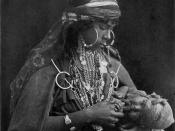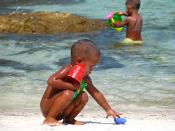Children at Play
August 14, 2004
By: Jennifer Ruddell
Psychology
Natural settings are valuable in monitoring a child in a study. This allows the child to act natural, thinking it is just them with no one else around. We can observe a child and his interactions with others, as well as, how he or she acts while playing with oneself. This allows a child to open up so we can see their true personality and what their imaginations are capable of. As we mature with age, adults loose that pure, naïve innocence of imagination that they once had as a child.
In this study of development, Charles Darwin was one of the first to keep a detailed biography of one of his sons. He later reflected upon why things happened, why and how the child reacted to certain situations and the outcome when his son reached adulthood.
Child #1 (male) 4 years of age:
This child loves to play rough and run.
He likes bouncing a basketball. Sharing is something he does not like to do with his ball. From the three types of temperaments described by physicians Alexander Thomas and Stella Chess, this child seems like #2 (slow to warm up). He has developed the "basic trait" with his mother, which of course he learned as an infant. He does not seem to have a great attachment to his mother. It seems as if he wants to do everything on his own (big boy stage). This would be described by Eric Erikssons'autonomy which is the feeling of being able to act independently and having personal control over one's actions.
Child#2 (female) 3 years of age:
This child is quiet. She seems to be an easy going child. On the temperament scale (Thomas and Chess) she is described as...


